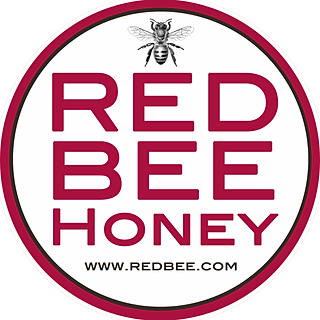Why did my Honey Crystallize?
- redbeehoney2
- Dec 1, 2016
- 4 min read
Crystallization of honey is little understood by the consuming public. Many assume that honey appears crystallized to be an adulterated or unnatural product. That is not so. Actually, crystallization process is natural and spontaneous. Most pure raw or unheated honey has a natural tendency to crystallize over time. Crystallization does not affect the honey except for color and texture. Crystallized honey is not spoiled and preserves the flavor and quality characteristics of the liquid honey. Some honey users like it in this state since it is easy to spread on bread or toast without dripping off and the taste is richer. Bear in mind that crystallization of honey has no bearing on its quality, but it is an attribute of pure and natural honey.

Why honey crystallizes? Honey is a highly concentrated sugar solution. It contains more than 70% sugars and less than 20% water. There is much sugar in honey relative to the water content. This means that the water in honey contains an extra amount of sugar than it could naturally hold. The overabundance of sugar makes honey unstable.
It is natural for honey to crystallize since it is an over-saturated sugar solution. The two principal sugars in honey are fructose (fruit sugar) and glucose (grape sugar). The content of fructose and glucose in honey varies from one type of honey to the other. Generally, the fructose ranges from 30- 44 % and glucose from 25- 40 %. The balance of these two major sugars is the main reason that leads to crystallization of honey, and the relative percentage of each determines whether it crystallizes rapidly or slowly. What crystallizes is the glucose, due to its lower solubility. Fructose is more soluble in water than glucose and will remain fluid. When glucose crystallizes, it separates from water and takes the form of tiny crystals. As the crystallization progresses and more glucose crystallizes, those crystals spread throughout the honey. The solution changes to a stable saturated form, and ultimately the honey becomes thick or crystallized.
Some honeys crystallize uniformly; some will be partially crystallized and form two layers, with the crystallized layer on the bottom of the jar and a liquid on top. Honeys also vary in the size of the crystals formed. Some form fine crystals and others large, gritty ones. The more rapid honey crystallizes, the finer the texture will be. Crystallized honey tends to set a lighter/paler colour than when liquid. This is due to the fact that glucose sugar tends to separate out in dehydrating crystals form, and that glucose crystals are naturally pure white. Darker honeys retain a brownish appearance.
How fast will honey crystallize? Different types of honey will crystallize at different rates. Some honey crystallizes within a few weeks after extraction from the combs, whereas others remain liquid for months or years. The following factors influence the speed of crystallization: (i) the nectar source collected by bees (the sugar composition of honey), (ii) the methods in which honey is handled (processed) and (iii) the temperature in preservation. The time it will take the honey to crystallize depends mostly on the ratio of fructose to glucose, the glucose to water ratio. Honey high in glucose sugar, with a low fructose to glucose ratio will crystallize more rapidly, such as alfalfa, cotton, dandelion, mesquite, mustard and rape (brassica napus). Honey with a higher fructose to glucose ratio (containing less than 30% glucose) crystallizes quite slowly and can stay liquid for several years without special treatment, for example, robinia (black locust), sage, longan, tupelo and jujube/sidr (ziziphus spina-christi). The higher the glucose and the lower the water content of honey, the faster the crystallization. Oppositely, honey with less glucose relative to water is a less saturated glucose solution and is slow to crystallize. Honey with heightened water content often crystallizes unevenly (not as a homogeneous mass) and separates into crystallized and liquid parts. The speed of honey to crystallize depends not only on its composition, but also on the presence of catalysts, like seed crystals, pollen grains and pieces of beeswax in the honey. These minute particles serve as nuclei for crystallization. Raw honey (unheated and unfiltered) contains bits of wax, pollen and propolis, and crystallizes faster. Honey that has been processed (e.g. heated and filtered) will remain in its liquid form longer than raw honey due to the elimination of nuclei, which encourage the growth of glucose crystals. Honey prepared for commercial market is usually heated and filtered. Heating and filtration of the honey dissolve any sugar crystals and remove foreign particles that might be present in it. Therefore, the crystallization is hindered. The storage temperature has a big effect. Honey crystallization is most rapid around 10-15 oC (50- 59 oF). At temperature below 10 oC (52 oF) the crystallization is slowed down. Low temperature increases the viscosity of honey (honey is thicker when cool), and this retards the formation and diffusion of crystals. Honey resists crystallization best at higher temperatures more than 25 oC (77 oF). When the temperature is 40 oC (104 oF) the crystals dissolve. Temperature above 40 oC (104 oF) will damage the properties of honey.
Avoiding crystallization – Store honey at room temperature in tightly closed containers. The optimum temperature for storing honey is 21 to 27 oC (70-80 oF). Avoid storing honey in cold temperature of 11 to 18 oC (52- 64oF), which is ideal for crystal formation. Don’t store in the refrigerator. Refrigerator temperatures accelerate the process of crystallization.





























Comments